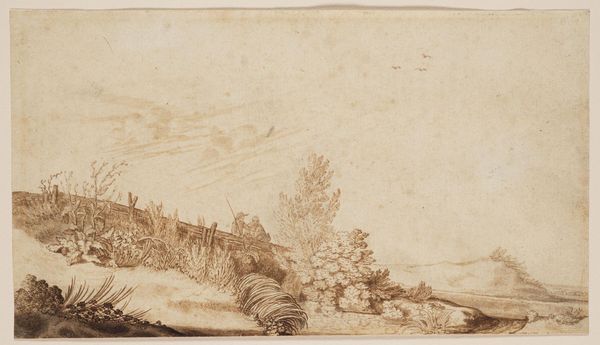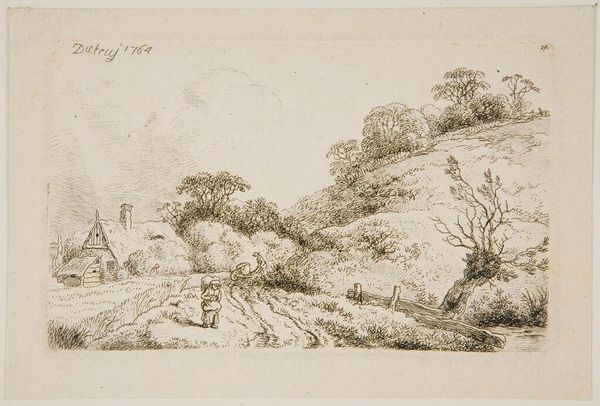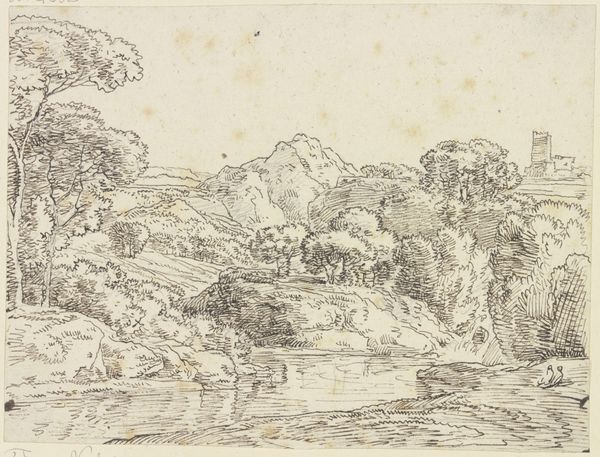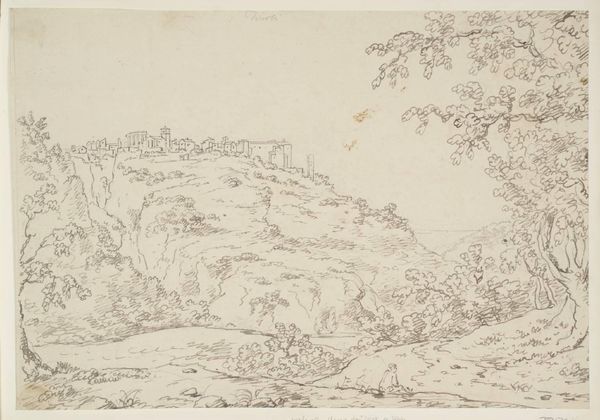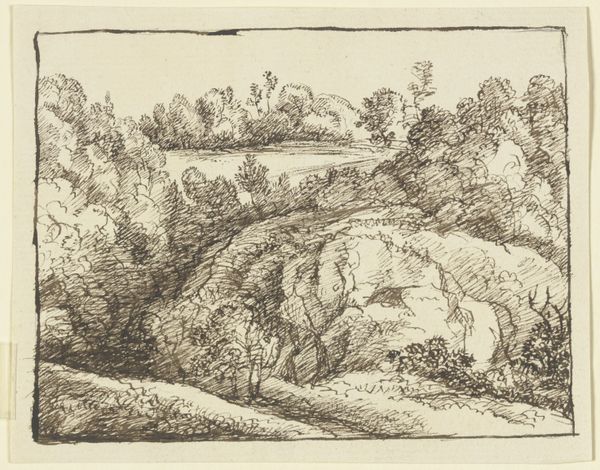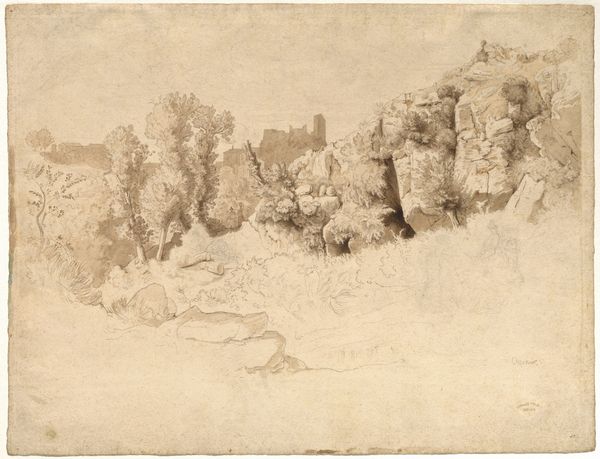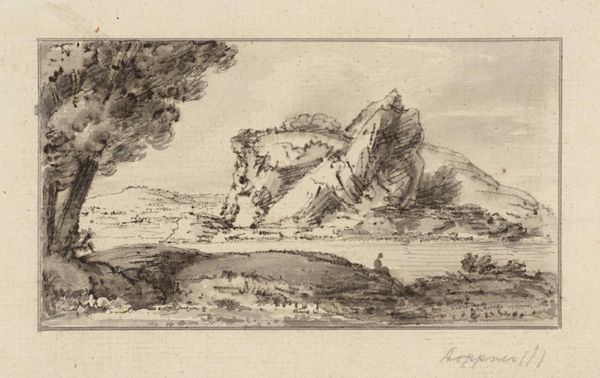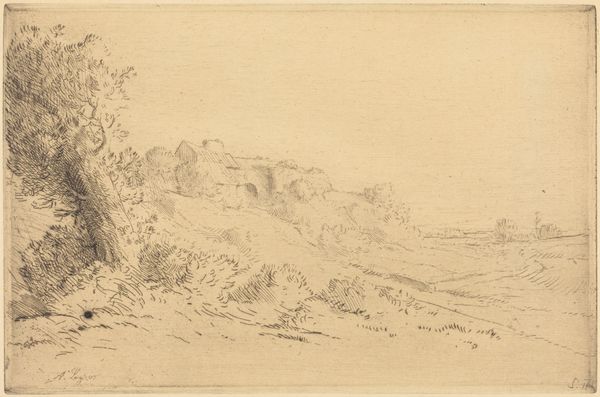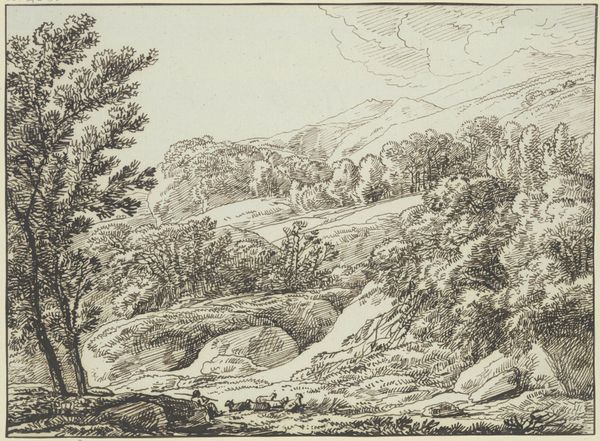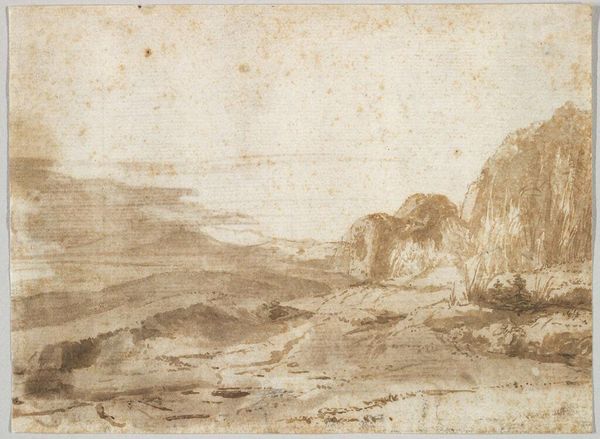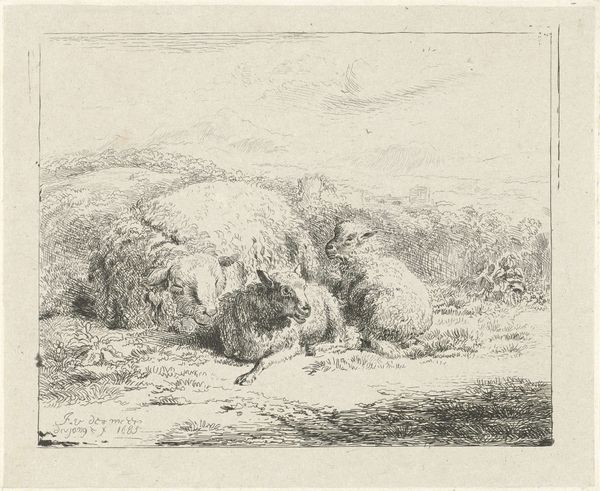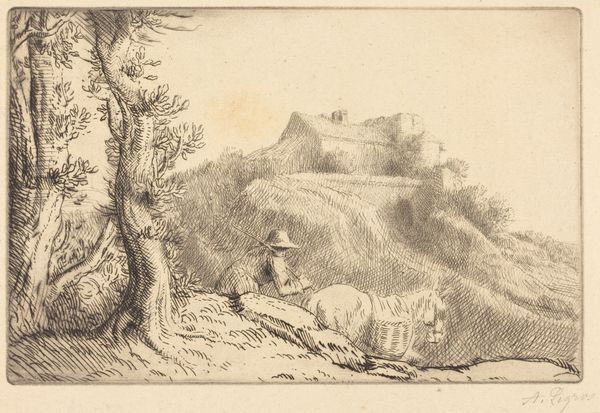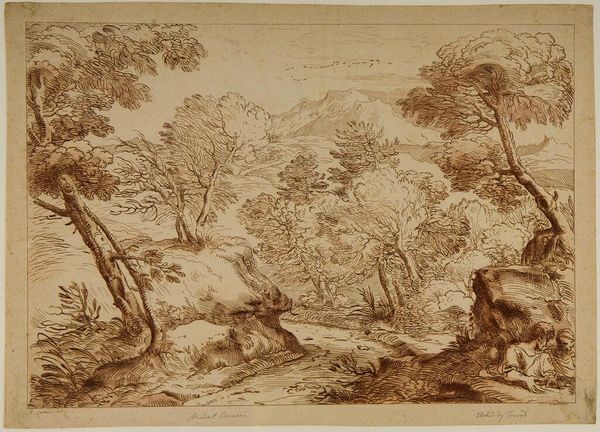
drawing
#
drawing
#
abstract painting
#
rough brush stroke
#
incomplete sketchy
#
charcoal drawing
#
possibly oil pastel
#
charcoal art
#
oil painting
#
acrylic on canvas
#
underpainting
#
watercolor
Dimensions: 258 mm (height) x 420 mm (width) (bladmaal)
Curator: Jean-Francois Millet's "Landskab med bakkeskråning nær Vichy," created between 1866 and 1868, presents a gently rolling landscape. Editor: My first impression? A hushed whisper of a place. Sepia tones creating a scene of faded memories—a countryside idyll viewed through gauze. Curator: Let's consider the medium: likely charcoal or a similar dry drawing technique. Millet’s known for portraying rural labor, often showing the strenuous activities of agricultural workers; what connections do you find to that focus here? Editor: It's subdued here. The drawing is quick, economical. We see evidence of labor, of shaping the landscape, but there's also peace, contemplation. This isn’t a document of toil; it’s more the artist resting with his impressions of the place, capturing what remains. Curator: Exactly, and the use of charcoal allowed for a degree of shading, mimicking light falling across furrows in the field, or the stand of trees. His chosen tools are critical here, in the depiction of rural life as subject for higher art. Editor: True, charcoal lends itself well to capturing fleeting moments and feelings. This particular landscape strikes me as possessing both melancholy and an earthy sort of elegance, wouldn't you agree? I can almost smell the damp soil. Curator: In that era, of course, landscapes represented complex relationships. Art historians examine Millet’s engagement with themes of peasant life within the larger social and economic context, specifically post-revolutionary France. We should question what type of commentary his artistic choices imply. Editor: Yes, I can imagine debates on those very grounds. And I understand the critical readings… but ultimately, this rendering invites one to experience a specific location subjectively—to sink in, so to speak, like roots in rich soil. Curator: Agreed, its accessibility remains profound even if its socio-historical placement warrants exploration, right? It displays some inherent charm of simply observing something so unembellished. Editor: Precisely. A quick dip into a place. Curator: Well articulated! Thank you.
Comments
No comments
Be the first to comment and join the conversation on the ultimate creative platform.
